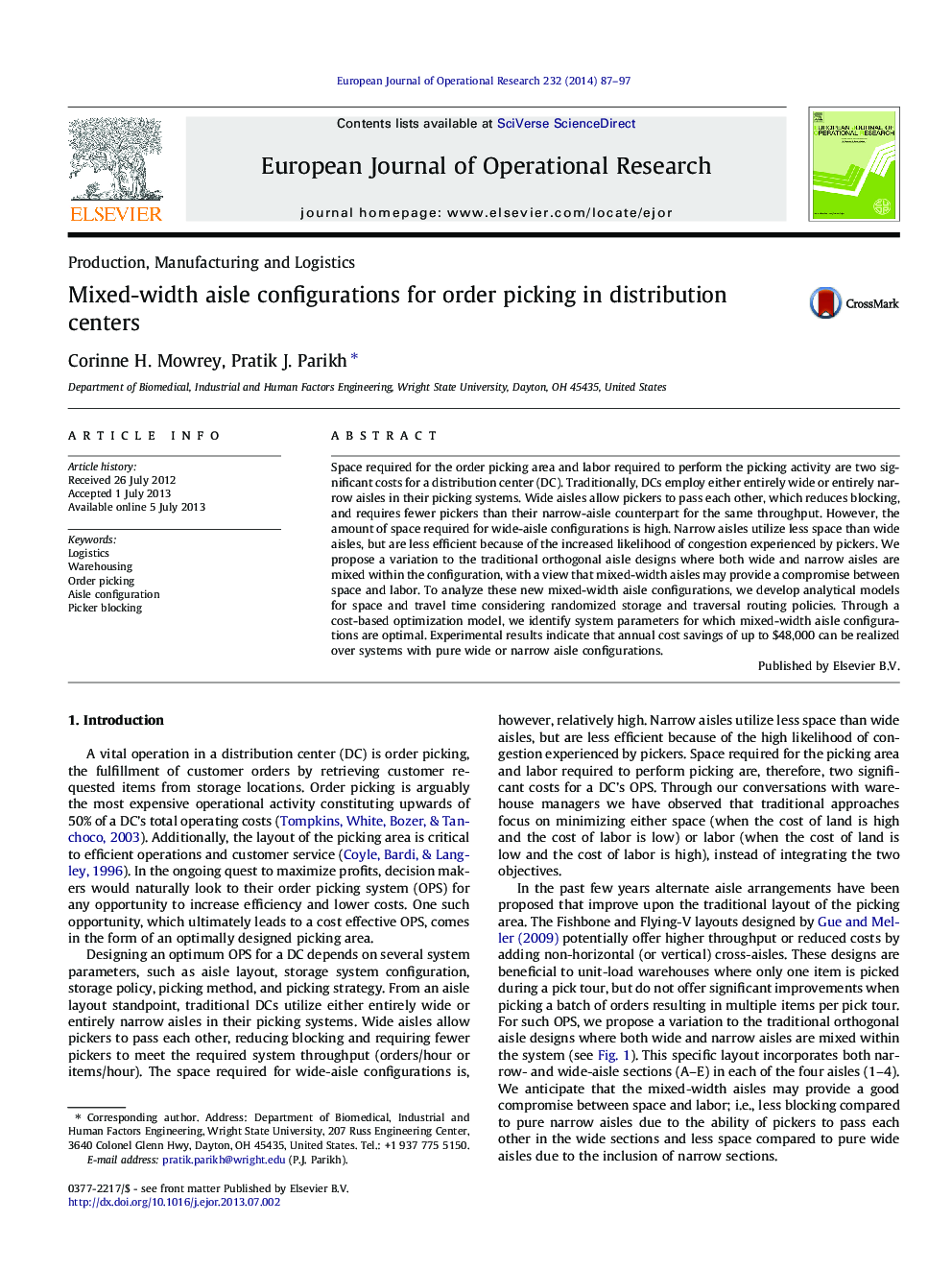| Article ID | Journal | Published Year | Pages | File Type |
|---|---|---|---|---|
| 479898 | European Journal of Operational Research | 2014 | 11 Pages |
•We introduce a novel mixed-aisle configuration for order picking.•Two rules are presented to generate feasible mixed-aisle designs.•Analytical space and throughput models are developed for such configurations.•A cost-based optimization model is developed to determine optimal aisle-width.•Throughput, space and labor costs, and storage area are critical determinants.
Space required for the order picking area and labor required to perform the picking activity are two significant costs for a distribution center (DC). Traditionally, DCs employ either entirely wide or entirely narrow aisles in their picking systems. Wide aisles allow pickers to pass each other, which reduces blocking, and requires fewer pickers than their narrow-aisle counterpart for the same throughput. However, the amount of space required for wide-aisle configurations is high. Narrow aisles utilize less space than wide aisles, but are less efficient because of the increased likelihood of congestion experienced by pickers. We propose a variation to the traditional orthogonal aisle designs where both wide and narrow aisles are mixed within the configuration, with a view that mixed-width aisles may provide a compromise between space and labor. To analyze these new mixed-width aisle configurations, we develop analytical models for space and travel time considering randomized storage and traversal routing policies. Through a cost-based optimization model, we identify system parameters for which mixed-width aisle configurations are optimal. Experimental results indicate that annual cost savings of up to $48,000 can be realized over systems with pure wide or narrow aisle configurations.
